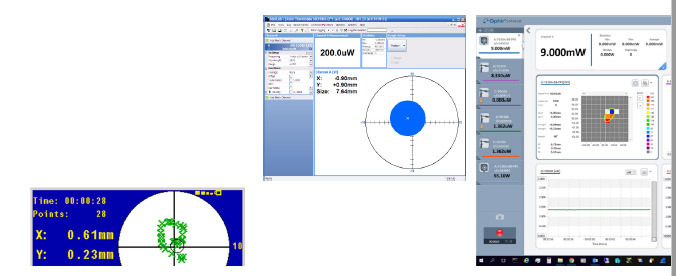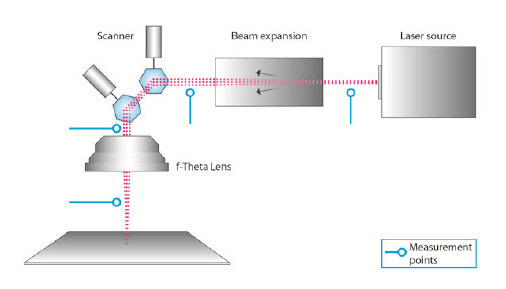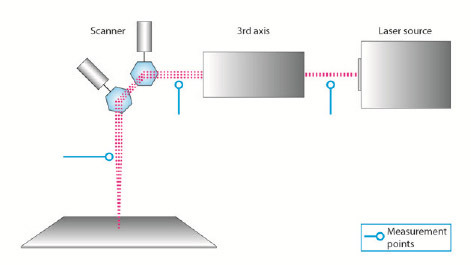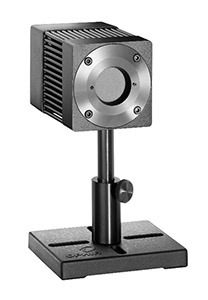For measurements taken on the building plane, the measurement arrangement poses a great challenge: If the sensor is placed at the edge of the plane, then one must take into account the angular dependence of the absorption of the sensor’s coating. This information is provided by the manufacturer of the measuring device. If the angle is too large, it produces a measuring error that must be corrected. Another peculiarity that can lead to measurement errors is if the beam diameters are too small. Since the coating of the sensor disk has a certain roughness, the beam diameter should ideally have a minimum size of 3-4 mm to ensure measurement accuracy. Furthermore, the beam should not hit the edges, but stay as close to the center of the sensor as possible. On the other hand, the beam diameter must not completely fill the aperture, otherwise measurement inaccuracies may occur. 60–70% is a guide value here, which leaves enough room for adjusting the sensor and avoids over-radiation or clipping.
While the repeatability of technically high-quality sensors is usually in the range of a few tenths of a percent, depending on the sensor technology, the absolute accuracy is usually in the range of +/-3–5% and thus covers all power ranges and wavelengths of the sensor. If, however, a measurement is carried out primarily at one given measuring point in terms of power and wavelength, this operating point can be considered in a special calibration. This way, the absolute accuracy of the measurement can be improved by about 1%, for example from 3% to 2%.
Overall, one should keep in mind that continuous operation causes undue stress on power gauges. In order to prevent functional damage, it is recommended to carry out regular visual inspections. Strong discolorations or shiny spots on the absorber surface, for example, are the first warning signs of local overloading of the coating. Moreover, the sensor should be calibrated regularly to ensure high repeatability and absolute accuracy in the long term.
If one is observing changes in a high-power laser, comparative measurements can be carried out at lower powers. The decisive factor is to always select the same settings, so the results can be compared against one another.
One thing is certain: Not measuring is no alternative for laser systems in additive manufacturing. Another undisputed fact is that the instruments for measuring beam profiles that also have integrated power measurement provide the most comprehensive results. In some cases, though, this measurement technology is simply out of reach for economic reasons. However, with the clever choice of power gauge – or PPS sensors – combined with the appropriate measuring strategy, the user can obtain a comprehensive diagnosis of the equipment’s condition. The advantages are obvious: They safeguard the investments that have already been made, prevent quality problems, and they produce sustainably since the machine hours, material and energy are all used optimally.





 Ultra-High Velocity
Ultra-High Velocity